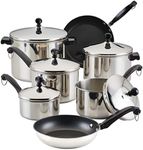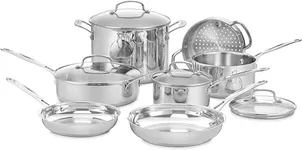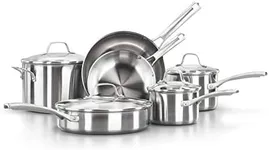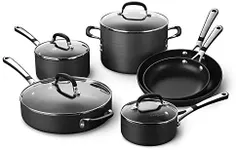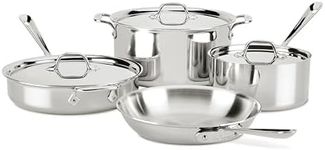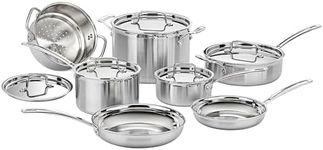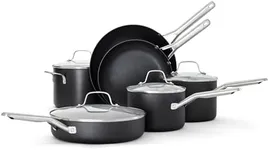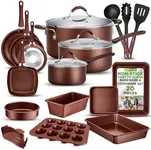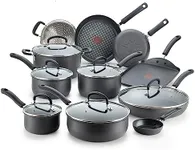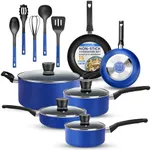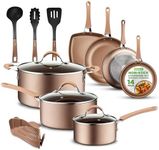Buying Guide for the Best Pan Sets
Choosing the right pan set can make a significant difference in your cooking experience. The right set will not only enhance your culinary skills but also ensure that your food is cooked evenly and efficiently. When selecting a pan set, consider the material, size, weight, heat conductivity, and compatibility with your stove. Understanding these key specifications will help you make an informed decision that suits your cooking style and needs.MaterialThe material of the pans affects heat conductivity, durability, and maintenance. Common materials include stainless steel, non-stick, cast iron, and copper. Stainless steel is durable and resistant to rust and staining, making it a good all-around choice. Non-stick pans are great for low-fat cooking and easy cleanup but may not last as long. Cast iron retains heat well and is excellent for searing, but it is heavy and requires special care. Copper offers superior heat conductivity but is often more expensive and requires regular polishing. Choose a material based on your cooking habits and willingness to maintain the pans.
SizePan sets come in various sizes, typically ranging from small saucepans to large skillets. The size you need depends on the type of cooking you do and the number of people you cook for. Smaller pans (1-2 quarts) are ideal for sauces and small portions, while medium pans (3-4 quarts) are versatile for everyday cooking. Larger pans (5 quarts and above) are suitable for big batches and family meals. Consider your usual cooking tasks and choose a set that includes the sizes you will use most frequently.
WeightThe weight of the pans can affect how easy they are to handle and how well they retain heat. Heavier pans, like those made from cast iron, retain heat better and provide more even cooking but can be cumbersome to lift and move. Lighter pans, such as those made from aluminum or non-stick materials, are easier to handle but may not distribute heat as evenly. Think about your strength and comfort level when handling heavy cookware and choose a weight that you can manage comfortably.
Heat ConductivityHeat conductivity refers to how quickly and evenly a pan heats up. Materials like copper and aluminum have high heat conductivity, meaning they heat up quickly and distribute heat evenly, which is ideal for precise cooking. Stainless steel has lower heat conductivity but is often combined with other materials to improve performance. If you need precise temperature control for delicate dishes, opt for pans with high heat conductivity. For general cooking, a combination of materials can offer a good balance.
Stove CompatibilityNot all pans are compatible with every type of stove. Some materials, like cast iron and stainless steel, work well on all stove types, including induction. Non-stick and aluminum pans may not be suitable for induction stoves unless they have a magnetic base. Check the compatibility of the pan set with your stove type to ensure optimal performance. If you have an induction stove, make sure the pans are specifically labeled as induction-compatible.
